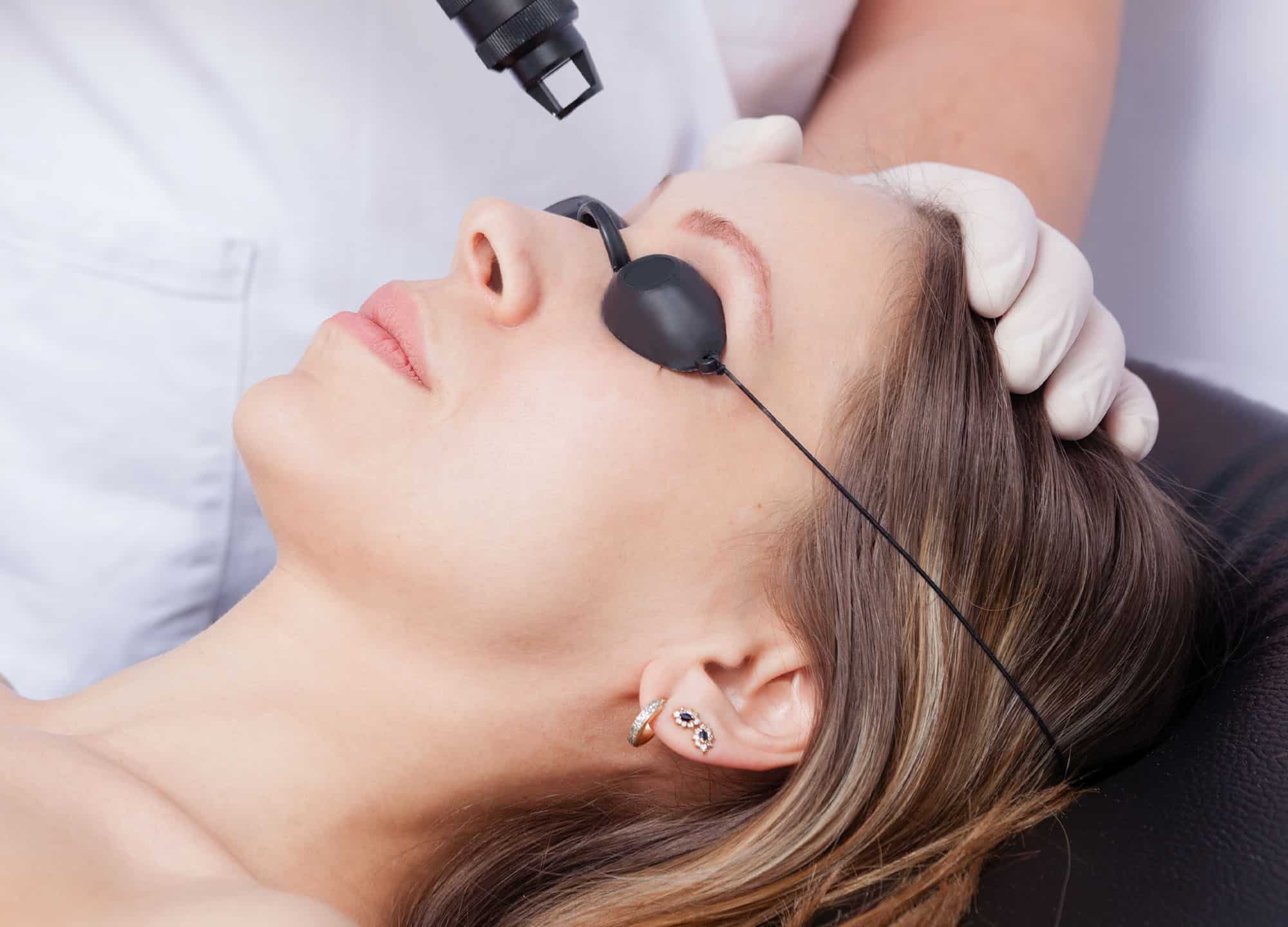If you’ve been thinking about skin resurfacing or are already a devoted laser fan, you may want to consider one of the latest, first-of-its-kind devices on the market: Opus Plasma. Technically speaking, it’s not a laser treatment, though it does offer laser-like results. Here, a deep dive on the new treatment that doctors are talking about.
What is the Opus Plasma, and how does it work?
First, a quick science lesson. Opus Plasma and the lasers of the world are considered energy-based devices. They all work by creating targeted areas of trauma in the skin and stimulating a wound-healing response, which in turn yields an improvement in skin tone and skin texture. Like many modern energy-based devices, the Opus Plasma is a micro-ablative, fractional skin resurfacing technology. This means that it treats only tiny portions (fractions, as it were) of the skin in order to control tissue damage and minimize healing time.
The difference? Whereas lasers use light energy, Opus Plasma uses—surprise!—fractional plasma energy. The two interact with the skin differently. “Lasers create columns of injury that run vertically through the layers of the skin—picture a lawn being aerated,” says Dr. Shraddha Desai, a board-certified dermatologist in Naperville, Illinois. On the flip side, the Opus Plasma creates a cup-shaped area of fractional injury that’s relegated to the surface of the skin, smoothing away wrinkles, almost like a sandblaster, she explains. (The fact that the effects of the microplasma are limited to the skin’s surface is an important differentiating factor between this and many lasers, especially as it pertains to downtime; more on that in a minute.)
It’s also worth noting that the metal pins of the Opus Plasma device are charged with radiofrequency energy. It’s this energy that reacts with atmospheric pressure in order to create the plasma that “injures” the skin—but it also has an added benefit. While the plasma works more superficially, the radiofrequency energy creates heat in the deeper layers of the skin, stimulating collagen production and, ultimately, helping tighten the skin, explains Dr. Desai.
Who is a good candidate for an Opus Plasma treatment?
To that point, Opus Plasma skin resurfacing is a good choice—not only for those looking to smooth textural issues such as fine lines, wrinkles, and acne scars but also for those who want to address other skin concerns, such as laxity and sagging, as well as an uneven skin tone. It’s an especially good choice for addressing loss of elasticity on the neck, says Dr. Desai. “Faces have always responded well to all kinds of energy-based devices, but the neck is trickier to treat because the skin is more sensitive and delicate. In my experience, Opus Plasma has worked beautifully, both for addressing skin laxity on the neck and [for] treating etched-in horizontal or ‘tech neck’ lines,” she explains. Another benefit? The Opus Plasma can be used much closer to the eye than lasers, making it ideal for addressing fine lines and crows’-feet.
While results obviously vary based on the individual, the Opus Plasma is generally recommended for those in their 40s to late 60s; Dr. Desai says most of the patients she’s treated are in their 50s and 60s. And while lasers have come a long way in recent years, many are still not recommended for patients with dark skin, due to the risk of hyperpigmentation. “While you always have to be careful using energy-based devices on dark skin, the Opus Plasma can be used on all skin types, from Fitzpatrick I-VI, really filling a niche in the market,” points out Dr. Desai.
What’s the procedure like?
As is the case with most devices, a topical numbing cream or topical anesthetic is first applied onto the treatment area. But unlike with, say, a first-time Fraxel treatment, which can take around 30 minutes, or a fractional CO2 laser, which can take up to an hour, Dr. Desai says it takes only about 15 minutes to perform a full-face treatment with the Opus Plasma. You should stop using retinoids for a week or so prior to the treatment and will have to remove any type of jewelry during the procedure. (If the plasma energy bounces off metal, it can cause a spark.)
It’s also worth noting that the Opus Plasma is very customizable. “The intensity can be dialed down to that of a light chemical peel or cranked up to achieve results comparable to a fractional CO2 laser,” says Dr. Desai. It comes with two different types of tips, for use on either the full face or on smaller, targeted areas. The device also works well on the body, including on the chest, arms, knees, and even to address stretch marks, notes Dr. Desai.
What’s the downtime following the Opus Plasma?
According to Dr. Desai, it’s usually on par with the downtime associated with Fraxel, even when the intensity is at a high level. Credit the fact that the plasma energy isn’t injuring the deeper layers of the skin, thus minimizing side effects such as dramatic swelling. Expect your skin to be slightly swollen and irritated, as if you got a sunburn, for 24 to 48 hours afterward. You may experience some skin flaking on days three and four, but most people are completely back to normal by day five to seven.
What kind of results does it deliver?
While it depends on how intense a treatment you receive, this device does have the ability to yield “big-time results,” says Dr. Desai. While three treatment sessions, spaced four to six weeks apart, are recommended for optimal results, Dr. Desai says that many of her patients are noticing improvements in texture and tone after just one treatment. That being said, be patient. The skin tightening effects, in particular, will take some time—about three months, she says—since they’re dependent on collagen remodeling. And, as is the case with laser skin resurfacing treatments, a maintenance treatment after the initial series, can help maintain the results.
How much does an Opus Plasma treatment cost?
As with most cosmetic treatments, the price tag varies based on where you live. According to Alma, Opus Plasma’s parent company, the nationwide average is $3,000 per treatment for a series of three treatments. Dr. Desai says the cost is comparable to that of a fractional CO2 laser, though about double of what a Fraxel treatment will run you. The Opus Plasma can also be used to treat only smaller areas, such as around the eyes or mouth or on the neck, which typically costs about $750–$1,000, she adds.
TL;DR: The Opus Plasma is a new technology that can yield a variety of results, often with minimal downtime. It’s slightly more expensive than some comparable treatments out there, and you’ll need to be patient in order to see the effects—but it’s worth researching, if you’re considering laser resurfacing.











